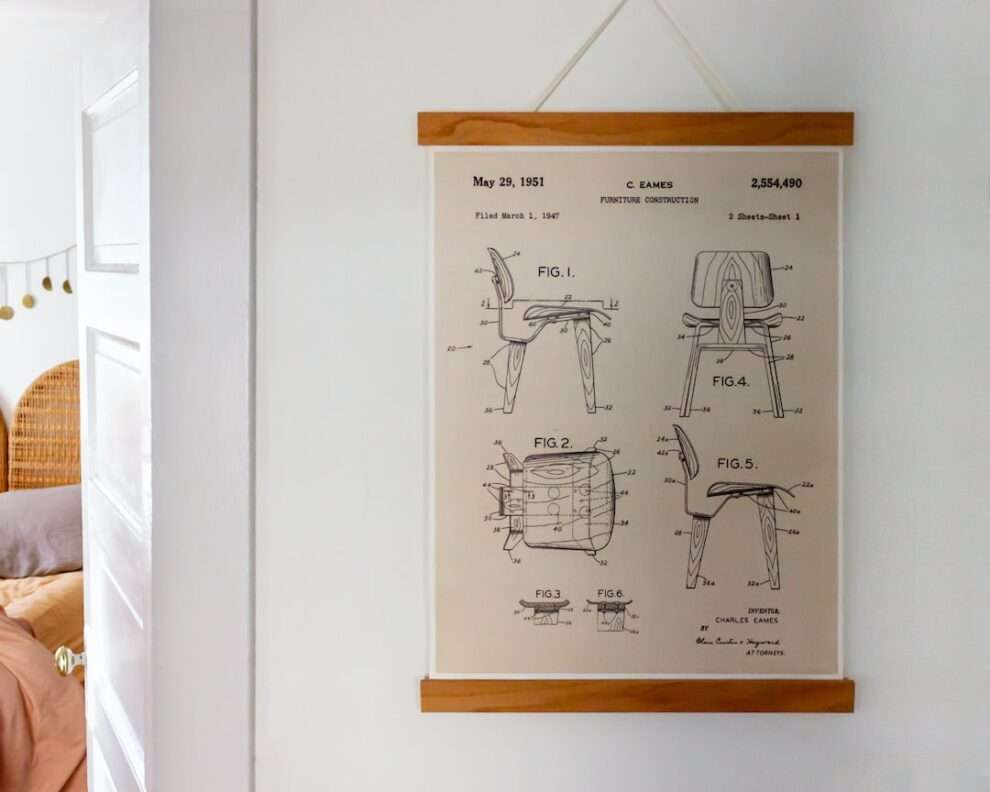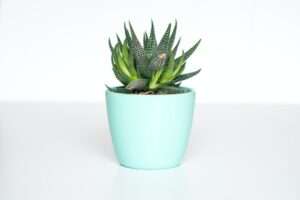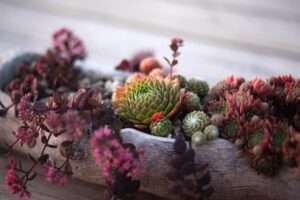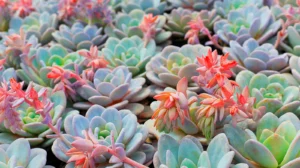Proper drainage is crucial for the health and well-being of succulents. Succulents are unique plants that have adapted to survive in arid environments by storing water in their leaves, stems, and roots. However, this means that they are susceptible to root rot and other issues if they are not provided with well-draining soil and containers. In this article, we will explore the importance of proper drainage for succulents and discuss various methods to ensure that your succulents thrive.
Understanding the Importance of Proper Drainage for Succulents
Succulents require well-draining soil and containers because they are prone to root rot. Root rot occurs when the roots of a plant are constantly exposed to excess moisture, leading to fungal infections and decay. This can be detrimental to succulents as their roots are not adapted to handle excessive moisture. Without proper drainage, the excess water will accumulate in the soil, suffocating the roots and causing them to rot.
Poor drainage can have severe consequences for succulents. In addition to root rot, waterlogged soil can lead to a lack of oxygen in the root zone, which can stunt growth and cause the plant to become weak and susceptible to diseases. It can also lead to nutrient deficiencies as the excess water washes away essential nutrients from the soil. Furthermore, waterlogged succulents are more prone to pests such as fungus gnats and mealybugs.
Common Causes of Root Rot in Succulents
Root rot is a common issue faced by succulent owners, and it is important to understand its causes in order to prevent it. One of the main causes of root rot is overwatering. Succulents have adapted to survive in dry conditions and do not require frequent watering like other plants. Overwatering can lead to waterlogged soil and create an ideal environment for root rot-causing fungi.
Another cause of root rot is using the wrong type of soil. Succulents require well-draining soil that allows excess water to flow out easily. Using regular potting soil or soil that retains too much moisture can lead to root rot. Additionally, using containers without drainage holes can also contribute to root rot as the excess water has no way to escape.
Signs and Symptoms of Waterlogged Succulents
It is important to be able to identify the signs and symptoms of waterlogged succulents in order to take appropriate action. One of the most obvious signs is yellowing or wilting leaves. This is a result of the roots being unable to absorb oxygen and nutrients due to the excess moisture in the soil. The leaves may also become soft and mushy.
Another symptom of waterlogged succulents is black or brown roots. Healthy roots should be firm and white, but when they are exposed to excess moisture, they can become soft and discolored. In severe cases, the roots may start to decay and emit a foul odor.
To determine if your succulent is suffering from root rot, gently remove it from its container and examine the roots. Healthy roots should be firm and white, while rotting roots will be soft, discolored, and may have a foul smell.
Choosing the Right Soil Mix for Your Succulents
Choosing the right soil mix is crucial for ensuring proper drainage for your succulents. The ideal soil mix for succulents should be well-draining and allow excess water to flow out easily. A common mistake made by succulent owners is using regular potting soil, which retains too much moisture and can lead to root rot.
A good succulent soil mix should consist of a combination of organic matter such as compost or peat moss, inorganic matter such as perlite or pumice, and coarse sand. The organic matter helps retain some moisture and provides nutrients, while the inorganic matter improves drainage and prevents the soil from becoming compacted. The coarse sand helps to further improve drainage.
In addition to the basic soil mix, there are various soil amendments that can be added to improve drainage. These include materials such as crushed granite, crushed lava rock, or calcined clay. These amendments help to create air pockets in the soil, allowing excess water to drain away more effectively.
The Role of Drainage Holes in Succulent Containers

Drainage holes are an essential feature of succulent containers as they allow excess water to escape. Without drainage holes, the water will accumulate in the bottom of the container, leading to waterlogged soil and root rot.
When choosing containers for your succulents, it is important to ensure that they have drainage holes. This can be as simple as drilling holes in the bottom of a plastic container or purchasing pots that already have drainage holes. Additionally, it is important to use a saucer or tray underneath the pot to catch any excess water that drains out.
There are various types of containers that are suitable for succulents. Terracotta pots are a popular choice as they are porous and allow for better airflow and moisture evaporation. However, they can dry out quickly, so it is important to monitor the moisture levels and water accordingly. Ceramic pots are also a good option as they are aesthetically pleasing and come in a variety of designs. Plastic pots are lightweight and affordable but may not provide as much airflow as terracotta or ceramic pots.
How to Improve Drainage in Existing Succulent Planters
If you have existing succulent planters that do not have proper drainage, there are several methods you can use to improve drainage. One option is to drill drainage holes in the bottom of the container using a drill with a masonry bit. Be sure to choose an appropriate size for the holes to allow for adequate drainage.
Another method is to create a drainage layer at the bottom of the container. This can be done by adding a layer of gravel, pebbles, or broken pottery pieces before adding the soil. The drainage layer helps to prevent the soil from becoming waterlogged by creating space for excess water to collect.
Additionally, you can use a layer of activated charcoal on top of the drainage layer. Activated charcoal helps to absorb excess moisture and prevent odors. It also helps to filter out impurities in the water.
Watering Techniques to Prevent Root Rot and Waterlogging
Proper watering techniques are essential for preventing root rot and waterlogging in succulents. Succulents have adapted to survive in dry conditions and do not require frequent watering like other plants. Overwatering is one of the main causes of root rot in succulents.
The best way to water succulents is to use the “soak and dry” method. This involves thoroughly watering the soil until water drains out of the bottom of the container and then allowing the soil to dry out completely before watering again. This mimics the natural rainfall patterns in their native habitats and allows the roots to absorb water without becoming waterlogged.
It is important to avoid overwatering your succulents. Succulents are drought-tolerant plants and can survive for extended periods without water. It is better to underwater than to overwater your succulents. Signs of underwatering include shriveled leaves and a wilted appearance.
The Benefits of Using Succulent Pots with Drainage Trays
Using succulent pots with drainage trays has several benefits for succulent care. The drainage tray catches any excess water that drains out of the pot, preventing it from pooling around the roots and causing root rot. It also helps to maintain a clean and tidy appearance by preventing water from spilling onto surfaces.
Drainage trays come in various materials and designs. Plastic trays are affordable and lightweight, while ceramic or terracotta trays can add a decorative touch to your succulent display. Some trays come with built-in drainage holes, while others have raised platforms to elevate the pot above the water.
When using a drainage tray, it is important to empty any excess water that collects in the tray after watering. Allowing the water to sit in the tray can lead to waterlogged soil and root rot.
Tips for Overcoming Drainage Challenges in Outdoor Succulent Gardens
Outdoor succulent gardens can present unique challenges when it comes to drainage. In areas with heavy rainfall or clay soil, it can be difficult to provide proper drainage for succulents. However, there are several methods that can be used to overcome these challenges.
One option is to create raised beds or mounds for your succulents. This helps to improve drainage by elevating the plants above the ground and allowing excess water to flow away more easily. Raised beds can be constructed using materials such as wood, stone, or concrete blocks.
Another method is to amend the soil with materials that improve drainage. This can include adding organic matter such as compost or peat moss, as well as inorganic matter such as perlite or pumice. These amendments help to break up heavy clay soil and improve its ability to drain.
Additionally, you can create a gravel or sand layer at the bottom of the planting hole before adding the soil. This helps to create a barrier between the soil and the clay, allowing excess water to drain away more effectively.
Troubleshooting Common Drainage Issues in Succulent Care
Despite your best efforts, you may still encounter common drainage issues in succulent care. One common issue is compacted soil, which can prevent water from draining properly. If you notice that water is pooling on the surface of the soil or taking a long time to drain, it may be a sign that the soil is compacted.
To remedy this issue, you can gently loosen the soil using a fork or chopstick. Be careful not to damage the roots in the process. Adding organic matter such as compost or peat moss can also help to improve the structure of the soil and prevent compaction.
Another common issue is overwatering. If you notice that your succulents are showing signs of root rot or waterlogging, it is important to adjust your watering habits. Allow the soil to dry out completely before watering again and ensure that the containers have proper drainage.
Proper drainage is essential for the health and well-being of succulents. Succulents are unique plants that have adapted to survive in arid environments, and they require well-draining soil and containers to prevent root rot and other issues. By understanding the importance of proper drainage and implementing the tips and techniques discussed in this article, you can ensure that your succulents thrive and continue to bring beauty to your home or garden. Remember to always monitor your succulents’ moisture levels and adjust your watering habits accordingly. With proper care, your succulents will flourish for years to come.
If you’re looking to prevent root rot and waterlogging in your succulents, it’s important to understand the relationship between succulents and humidity. In a related article on GirlsGist, “Do Succulents Thrive in Humid Environments? Exploring the Relationship Between Succulents and Humidity,” you’ll find valuable insights on how humidity levels can affect the health of your succulent plants. Understanding this relationship can help you create the ideal environment for your succulents to thrive. Check out the article here for more information.
FAQs
What is succulent drainage?
Succulent drainage refers to the ability of the soil to allow excess water to flow out of the pot or container, preventing waterlogging and root rot.
What causes root rot in succulents?
Root rot in succulents is caused by overwatering and poor drainage. When the soil is constantly wet, the roots of the succulent can become waterlogged and begin to rot.
How can I prevent root rot in my succulents?
To prevent root rot in succulents, it is important to ensure that the soil has good drainage. Use a well-draining soil mix and a pot with drainage holes. Water the succulent only when the soil is completely dry.
What is the best soil mix for succulents?
The best soil mix for succulents is one that is well-draining and contains a mixture of sand, perlite, and peat moss. This allows excess water to flow out of the pot and prevents waterlogging.
Can I use regular potting soil for succulents?
Regular potting soil is not recommended for succulents as it retains too much moisture and does not provide adequate drainage. It is best to use a well-draining soil mix specifically designed for succulents.
How often should I water my succulents?
Succulents should be watered only when the soil is completely dry. This can vary depending on the environment and the type of succulent, but generally, once every 1-2 weeks is sufficient.
What are the signs of overwatering in succulents?
Signs of overwatering in succulents include yellowing or wilting leaves, mushy or blackened roots, and a foul odor coming from the soil.

















Add Comment